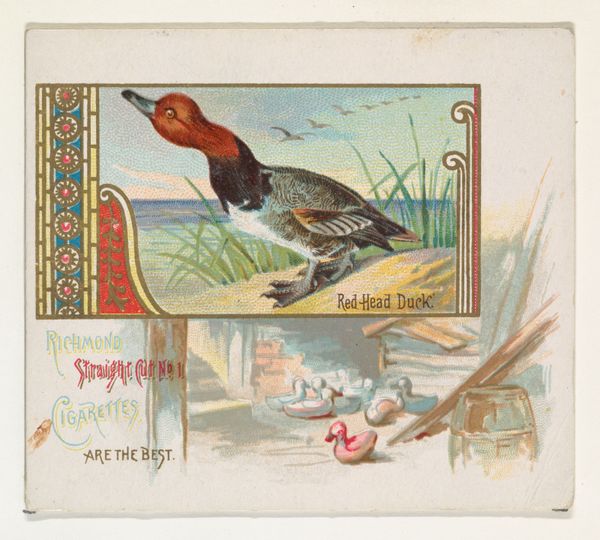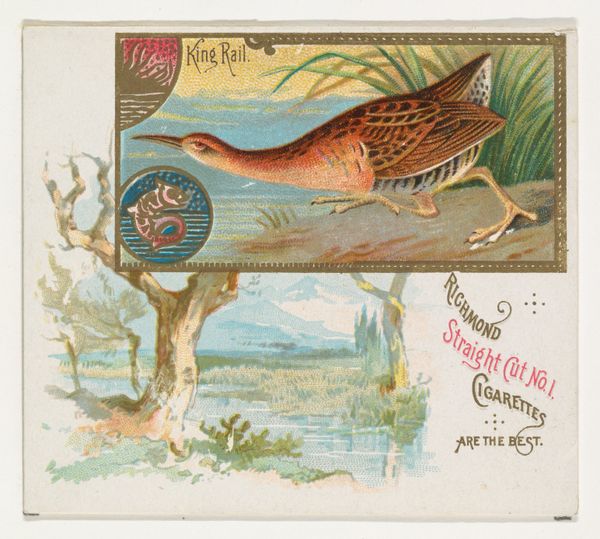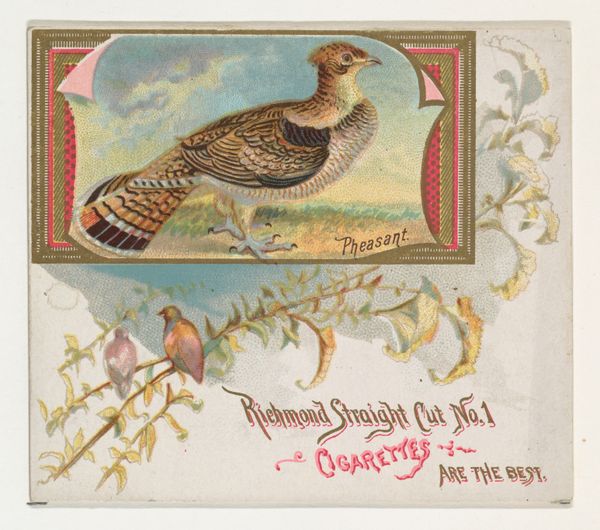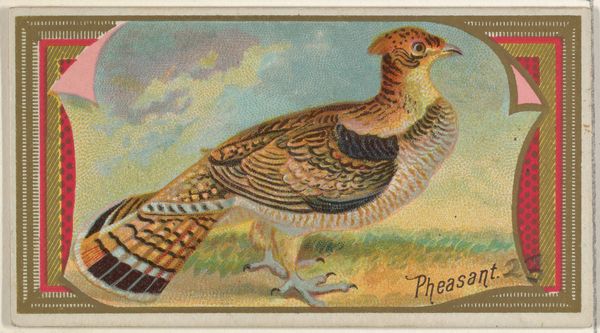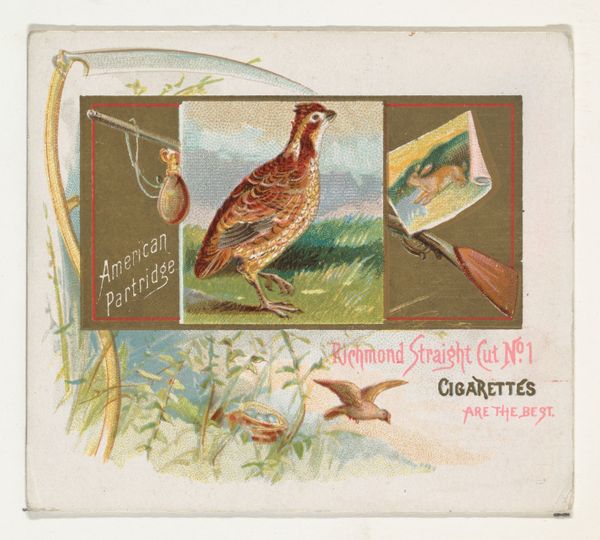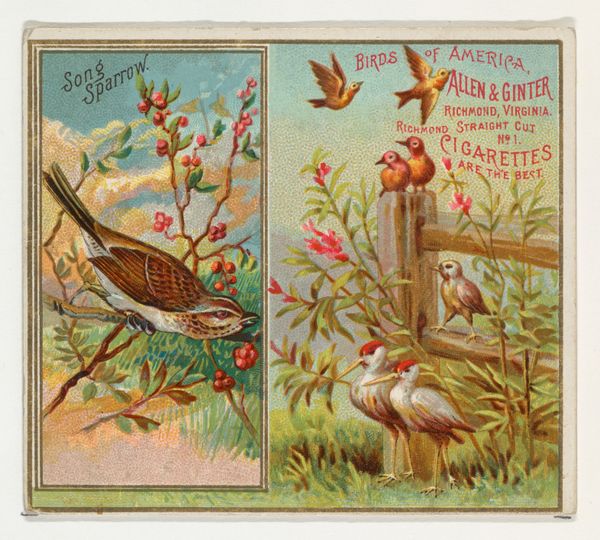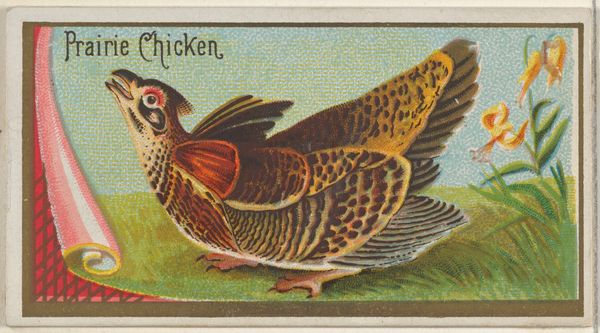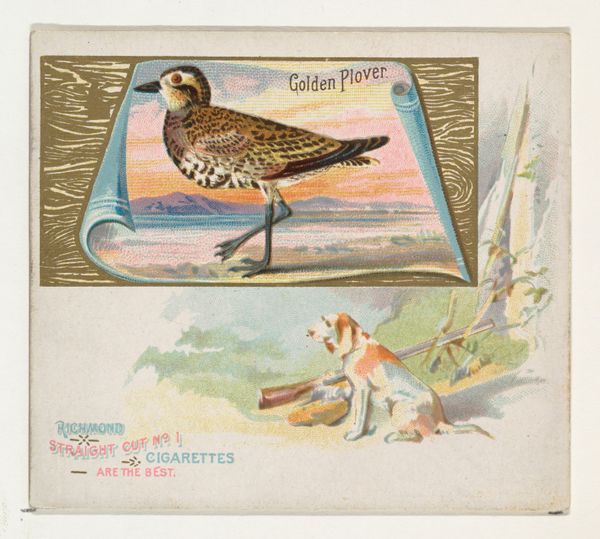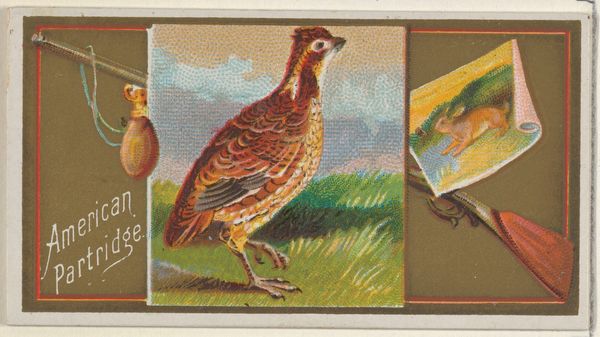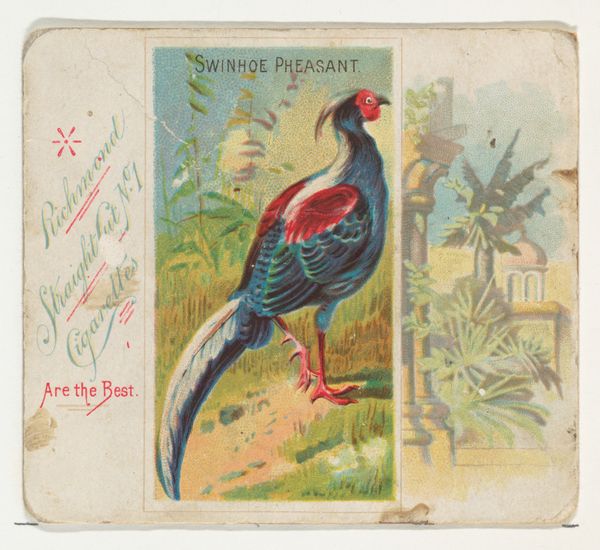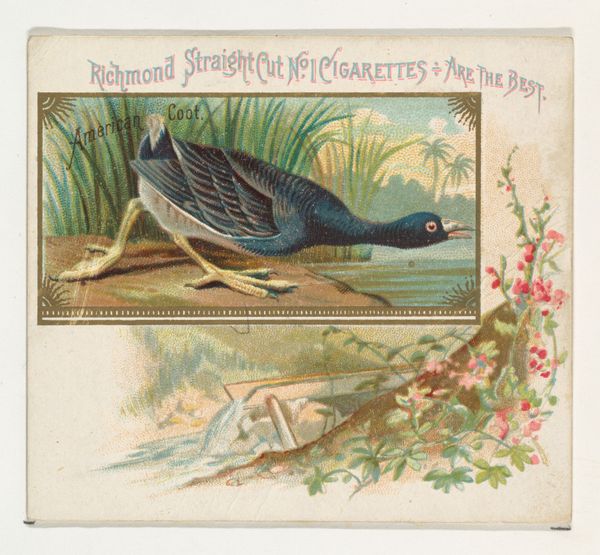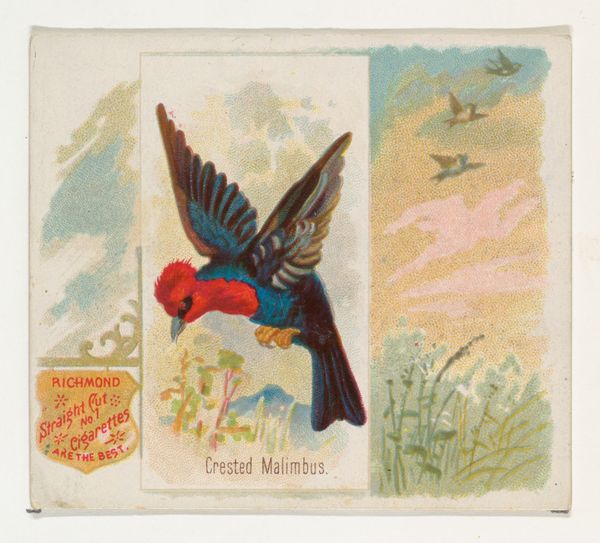
Prairie Chicken, from the Game Birds series (N40) for Allen & Ginter Cigarettes 1888 - 1890
0:00
0:00
drawing, lithograph, print
#
drawing
#
lithograph
# print
#
impressionism
#
bird
Dimensions: Sheet: 2 7/8 x 3 1/4 in. (7.3 x 8.3 cm)
Copyright: Public Domain
Curator: Today we're looking at "Prairie Chicken," a lithograph from the Game Birds series by Allen & Ginter, dating from 1888 to 1890. It’s part of a set of collectible cards distributed with their cigarettes. Editor: It’s immediately striking, this tiny print. There’s such an interesting use of layering and depth; the framing devices create a miniature stage for the bird. It almost feels like we're peering into a small, constructed world. Curator: The composition definitely guides the eye. The prairie chicken, with its speckled plumage and partially spread wings, dominates the central plane. The crispness of its form contrasts against the soft hues surrounding it. Editor: But thinking about these collectible cards being packaged with cigarettes makes me uneasy. The commodification of nature through tobacco, targeting presumably a male audience with images of virility and conquest... it hints at the exploitative practices towards both the environment and the consumer. Curator: It's a fascinating point. From a formal perspective, there is a certain aesthetic appeal with how the illustration employs color, emphasizing balance, texture and form. Note how the pink paper curl at the lower left, a stylized flourish, mirrors the ochre tone on the opposite side, framing the image. Editor: But considering this card as a cultural artifact, we can’t ignore the problematic values that such promotional items reflect—the disregard for conservation, for example, and the normalization of tobacco use, packaged within a culture of leisure. Curator: I can't argue with you there, and if we follow that trajectory we must note that as lithographs, these cards democratized images. They made nature, or a simulacrum of it, available on a mass scale to anyone who could afford cigarettes. It's both accessible and... exclusionary. Editor: Exactly. This isn’t just about a bird; it’s a complex intersection of consumer culture, visual representation, and ethical implications. Considering it makes me aware of how deeply interwoven such values are in these nostalgic relics of the past. Curator: Ultimately, observing such prints allow us to understand the visual preferences and evolving awareness surrounding natural subjects at the end of the 19th century. Editor: It urges us to probe beneath the appealing aesthetics. In the final accounting it encourages dialogues between art, commerce, and the shifting grounds of social responsibility.
Comments
No comments
Be the first to comment and join the conversation on the ultimate creative platform.
